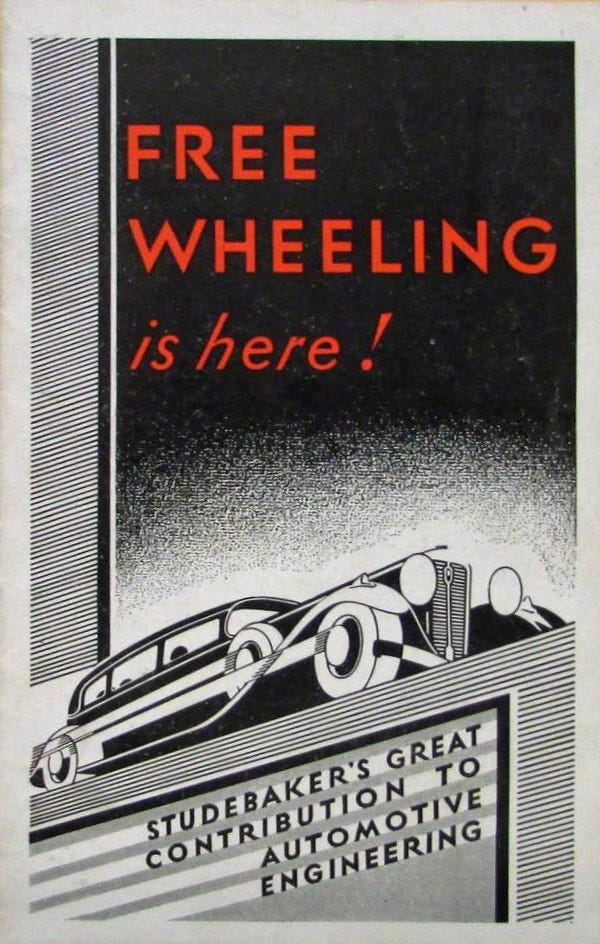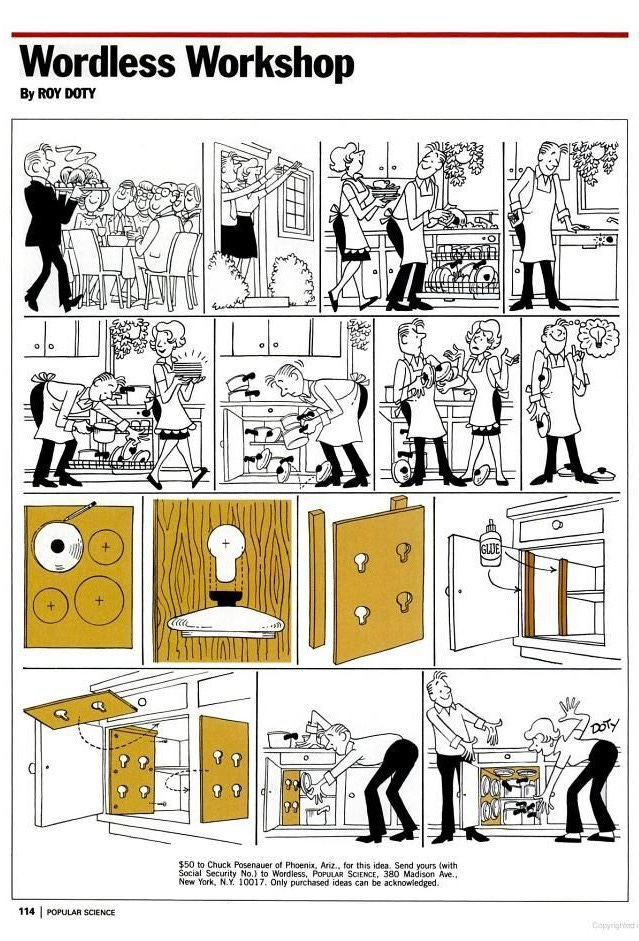Studebakers: Engineering and Innovation
It wasn’t unusual for one of the mechanics, even for Old Randolph himself on occasion, to come in from the shop wearing a puzzled look and holding some doohickey or other.
“Say, Herb,” he might say, “what the Sam Hill is this thingumabob supposed to do? God knows I never saw the like of it before now.”
“This?” Herb might say, giving the part the once-over. “This gadget is part of the free-wheeling assembly. Brand new. …”Herb ’n’ Lorna, Chapter 12


Projects: Practical and Impractical
Herb designed and built, to consider one example of his work during this period, an insert for kitchen drawers that, when the drawer was fully opened, raised itself from the drawer and presented the contents at an angle of about forty-five degrees. When one began pushing the drawer closed, the gadget began collapsing into the drawer again, its rate of collapse matching the rate at which one closed the drawer.
Herb ’n’ Lorna, Chapter 12

See also: Studebakers, TG 12, TG 132; Studebakers: Babbington Studebaker TG 3; Impractical Craftsman TG 44, TG 135
Cartoonist Jean-Jacques Sempé, who could make the world giggle, has died. The world-famous cartoonist could capture a moment, a gesture, an attitude, a situation like no one else. He illustrated ‘Le Petit Nicolas,’ over one hundred ‘The New Yorker’ covers and published a collection of drawings almost every year. He died on August 11 at the age of 89.
For most of his life, the French cartoonist Jean-Jacques Sempé, who has died aged 89, would draw a line at talking publicly about his chaotic and unhappy childhood. He was well into his 80s when he finally admitted that the cheerful schoolboy character who would become his most famous creation – Le Petit Nicolas – was a way of dealing with a period in his life that he described as “a little tragic”.
Beloved in France, popular around the world and one of America’s favorite cartoonists, Sempé drew more than 100 covers for The New Yorker in an association that began in 1978. His cartoons also appeared in other magazines and newspapers and were collected in dozens of anthologies. And in a collaboration with the writer René Goscinny begun in 1959, he illustrated a series of children’s books based on the escapades of Le Petit Nicolas (Little Nicholas), a nostalgic version of postwar French childhood. Their first volume was an overnight success, then came four sequels, and in time the series became an international classic, reprinted in France, the United States and many other countries.
[more to come on Tuesday, August 30, 2022]
Have you missed an episode or two or several?
You can begin reading at the beginning or you can catch up by visiting the archive or consulting the index to the Topical Guide.
You can listen to the episodes on the Personal History podcast. Begin at the beginning or scroll through the episodes to find what you’ve missed.
You can ensure that you never miss a future issue by getting a free subscription. (You can help support the work by choosing a paid subscription instead.)
At Apple Books you can download free eBooks of “My Mother Takes a Tumble,” “Do Clams Bite?,” “Life on the Bolotomy,” “The Static of the Spheres,” “The Fox and the Clam,” “The Girl with the White Fur Muff,” “Take the Long Way Home,” “Call Me Larry,” and “The Young Tars,” the nine novellas in Little Follies, and Little Follies itself, which will give you all the novellas in one handy package.
You’ll find overviews of the entire work in An Introduction to The Personal History, Adventures, Experiences & Observations of Peter Leroy (a pdf document) and at Encyclopedia.com.




